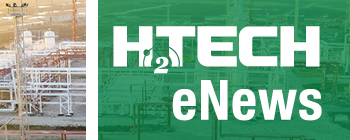Articles
The importance of offtake agreements in shaping the global H2 economy
Editorial Comment
TYLER CAMPBELL, Managing Editor
To establish a sustainable global green hydrogen (H2) market, offtake agreements—which determine the sale, purchase and supply of green H2 and its derivatives—are paramount. Without clear buyers, large investments in green H2 projects will continue to present challenges. The lack of clarity in the role that H2 will play in the future global energy mix contributes to the lack of offtake commitments, and of course, agreement terms will vary depending on the H2’s planned end-use (e.g., industrial, power generation).
According to the Green Hydrogen Oragnization, green H2 offtake agreements will resemble a hybrid blend of concepts used in power purchase agreements (PPAs) for power generation projects and gas supply and purchase agreements (GSPAs).1 There is still no global consensus on H2 pricing as there is for crude or liquified natural gas (LNG), making negotiations for early-stage green H2 offtake agreements extremely difficult. LNG faced these same challenges in the early stages of its market.
Recent H2 offtake agreements. Despite these challenges, several offtake agreements have been made in recent months for H2 and its derivatives. In October 2024, Woodside and Keppel signed a conditional offtake term sheet for the supply and purchase of liquid H2 to power Keppel’s data centers in Singapore from as early as 2030. The term sheet is conditional, depending on the negotiation and execution of a fully termed sales and purchase agreement and all necessary approvals.
In the same month (October 2024), BASF and AM Green B.V. entered a memorandum of understanding (MoU) that included a non-binding letter of intent for the offtake of 100,000 metric tpy of green ammonia (nitrogen and H2) produced from renewable energy in India. In December 2024, Hapag-Lloyd reached a long-term offtake agreement with Goldwind to deliver 250,000 tpy of green methanol (carbon, H2 and oxygen).
So far, in 2025, other offtake agreements include:
- Provaris Energy and Norwegian Hydrogen: A conditional term sheet with Uniper Global Commodities SE for the supply, transport and offtake of renewable fuels of non-biological origin (RFNBO)-certified H2. The agreement outlined the delivery of 42,500 tpy of green H2, transported via Provaris’ innovative H2Neo compressed H2 carriers.
- Trammo and ExxonMobil: A head of agreement (HoA) for Trammo’s long-term offtake of 300,000 tpy─500,000 tpy of low-carbon ammonia from ExxonMobil’s Baytown, Texas (U.S.) facility.
- HNO International: A H2 offtake agreement with a Texas-based company supporting zero-emissions mobility. Under the agreement, HNO will supply H2 from its 1.25-MW Scalable H2 Energy Platform, which produces up to 500 kg/d of green H2.
- Lhyfe: A major contract with INOCEL for the supply of up to 140 tons of green H2 over a period of 4 yr for the test benches of high-power fuel cells manufactured by INOCEL.
H2 offtake agreements are a critical component in developing the global H2 landscape. With a guaranteed demand, investments in H2 infrastructure will increase and project financing issues will dissipate. These are a few examples of offtake agreements for various end uses, and while the projects may differ, the chicken-or-the-egg dilemma continues to be a challenge. H2T
LITERATURE CITED
1 Green Hydrogen Organisation, “Considerations for hydrogen offtake agreements,” 2024, online: https://gh2.org/sites/default/files/2024-05/GH2_Considerations%20for%20Hydrogen%20Offtake%20Agreements_2024.pdf

